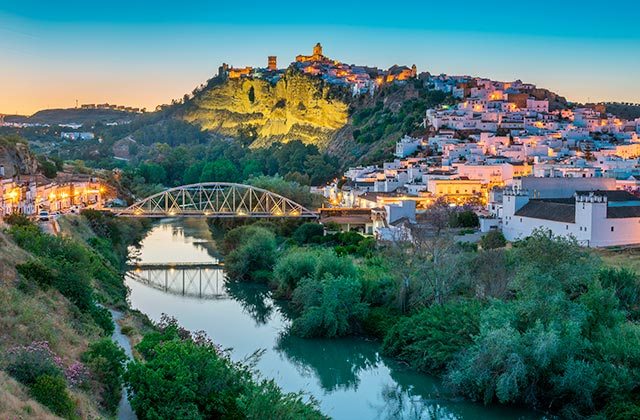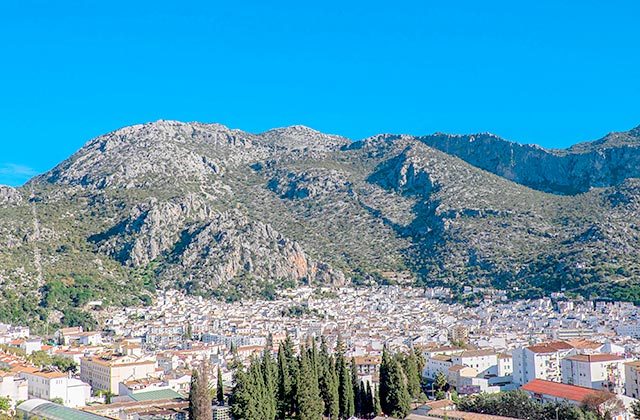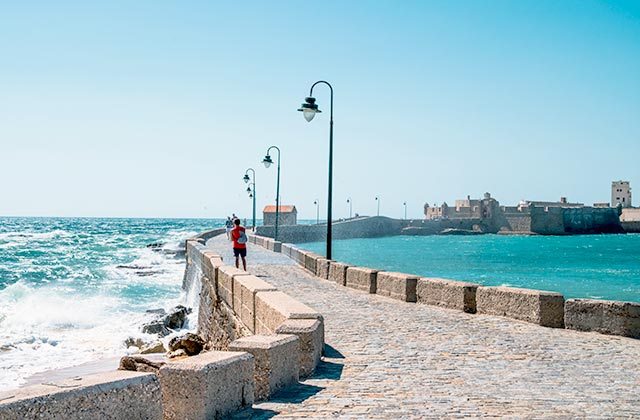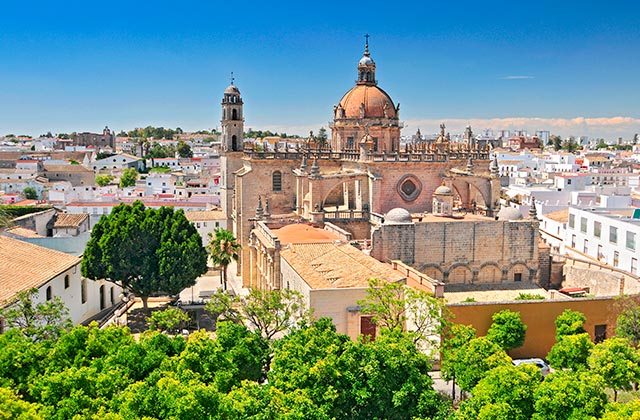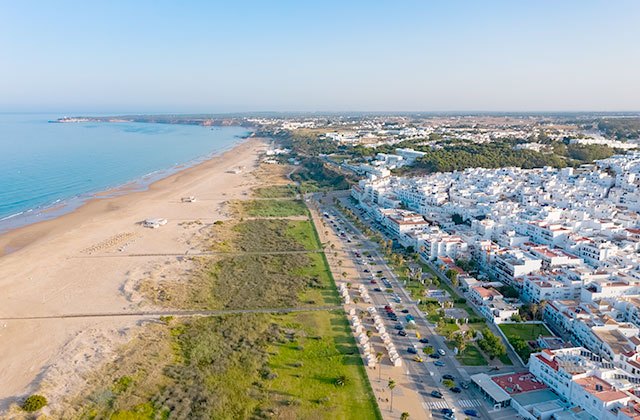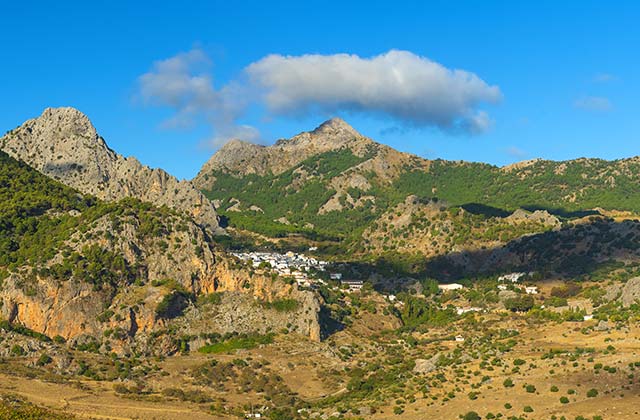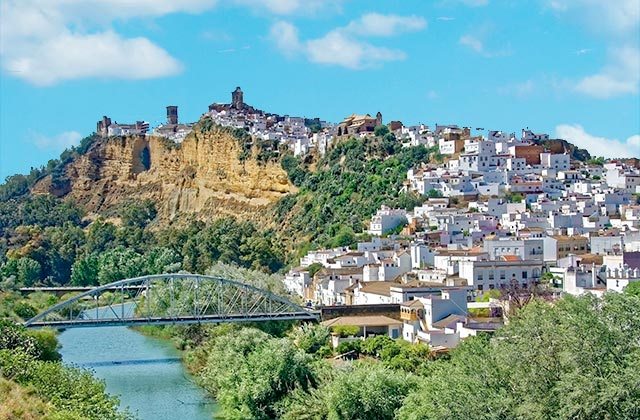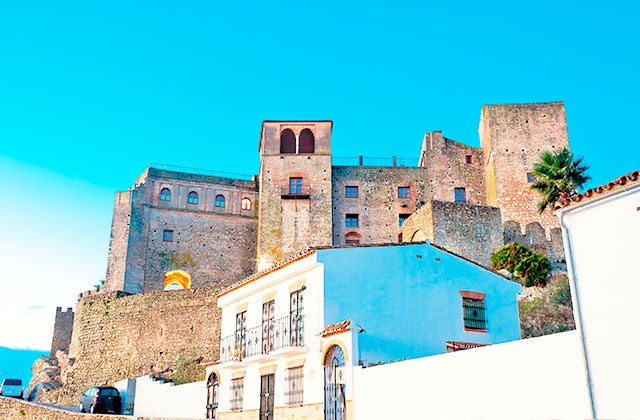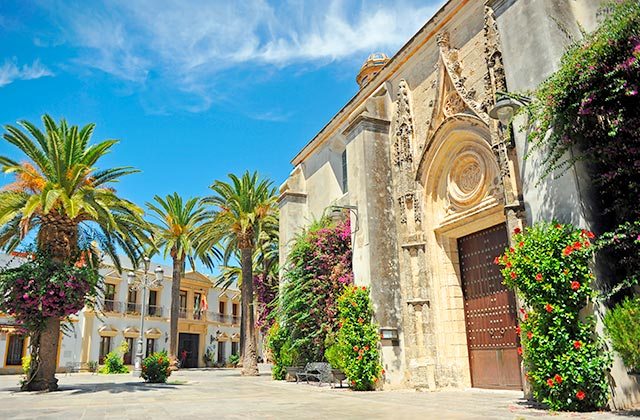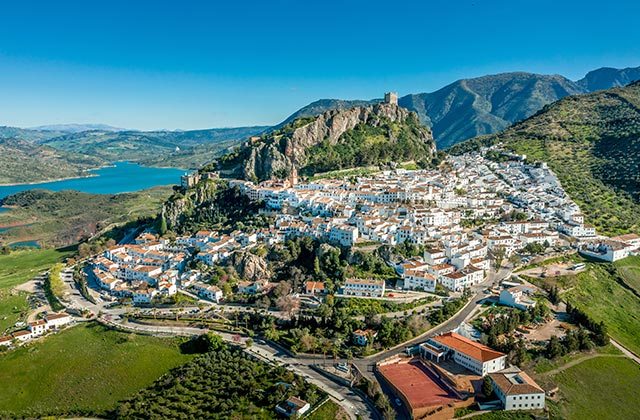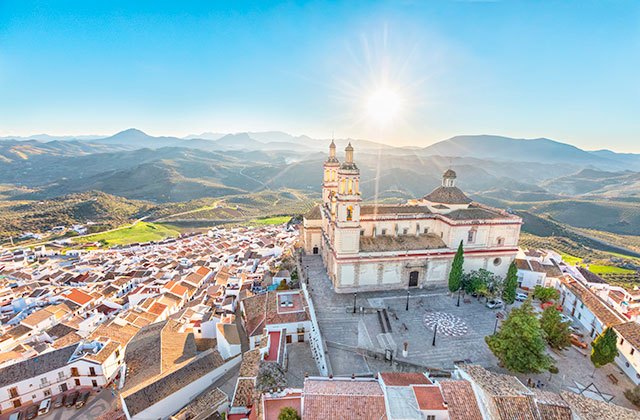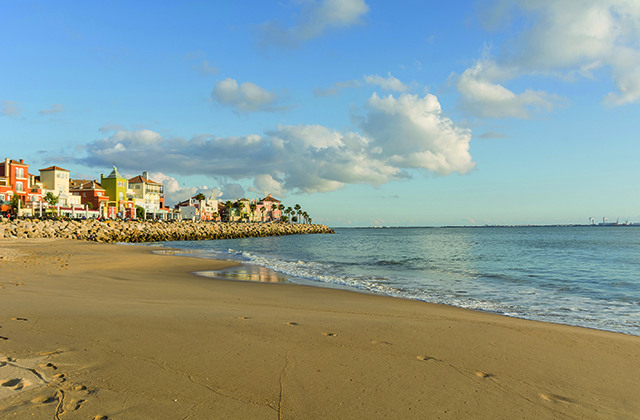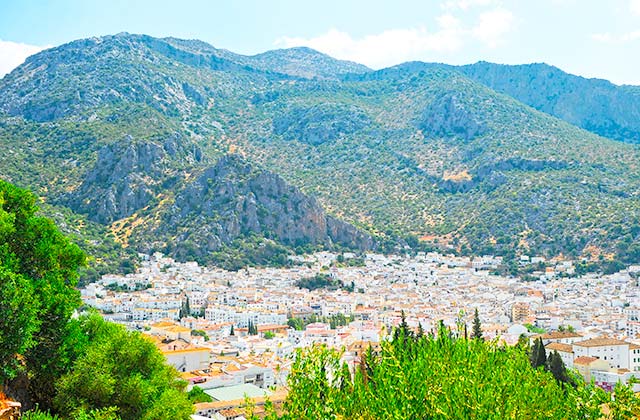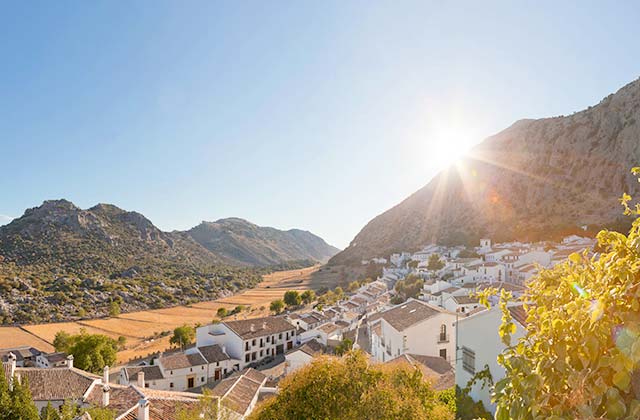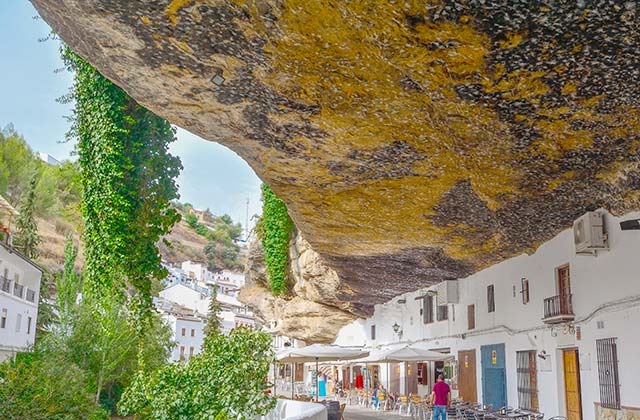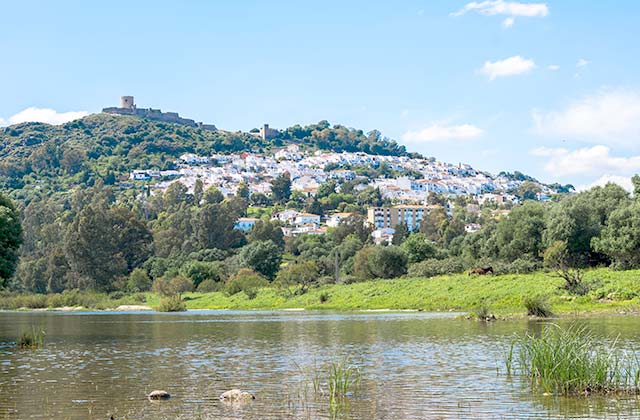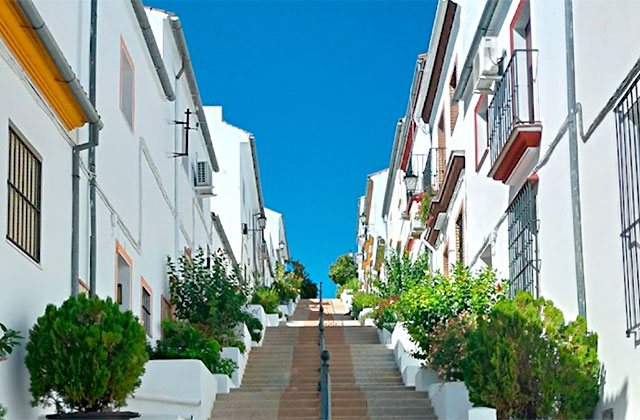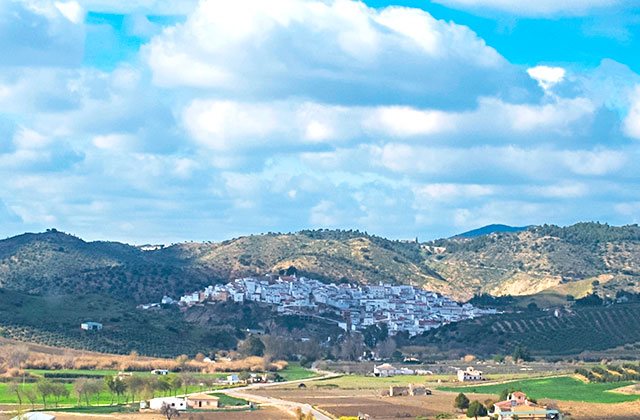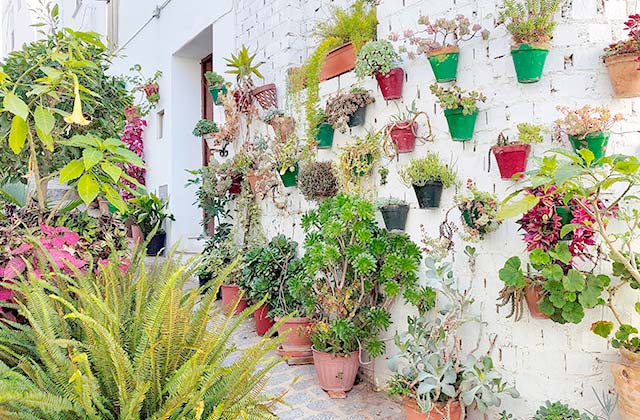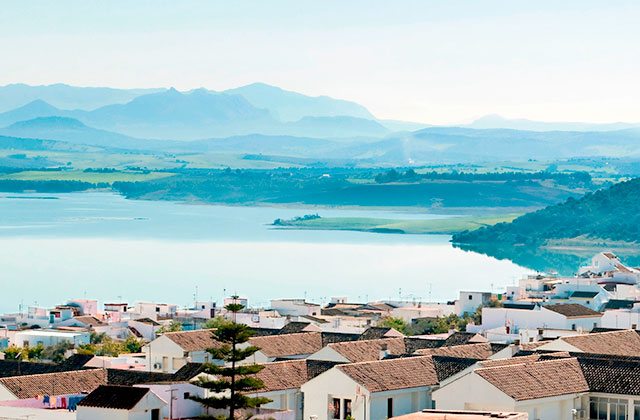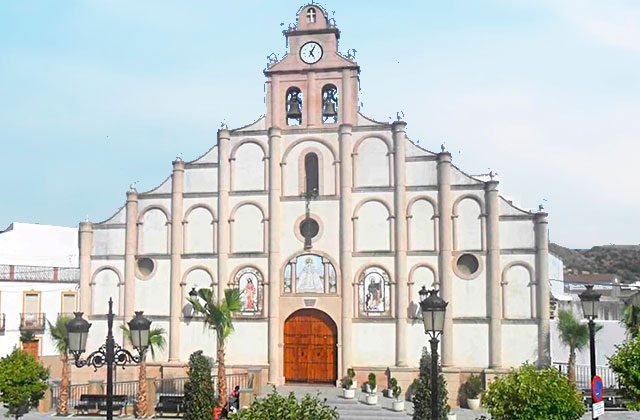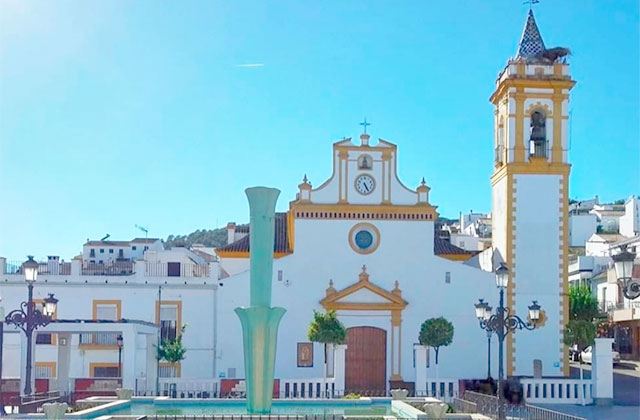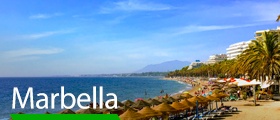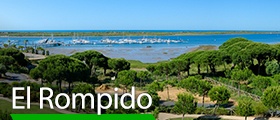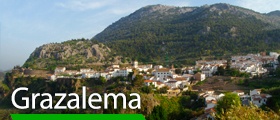
White villages of Cádiz. Discover the most charming villages of Cádiz.
Cadiz is one of the Andalusian provinces known for its rich gastronomy and its fine sandy beaches. It is one of the most visited by tourists in the summer season because the coast of Cadiz is one of the most beautiful with its famous and incredible sunsets. However, the interior of Cadiz hides some real gems, such as the white villages. Here we find the famous Route of the White Villages of Cadiz, one of the most famous in the entire national panorama.
The villages of Cadiz have a history and a heritage, a natural and cultural heritage that embellishes this Andalusian province. The white villages are perhaps the best known and are the perfect environment for rural tourism. Because history is still alive in their streets as well as the most traditional gastronomy. Both are an attraction for visitors in search of treasures such as the villages of Cadiz.
They are many and varied, but they all have something in common: the architecture of their streets, tradition, typical dishes, and charm are the essence of these white villages in Cadiz.
El Bosque
We travel to the Grazalema Sierra to visit one of the prettiest and most magical municipalities in all Cádiz. There are many reasons why you should visit El Bosque, such as its beautiful streets briming with life or its magnificent culinary offering. And if you are still unconvinced, all you need to know is that this village forms part of the White Village Route. What more is there to say?
Benaocaz
If there is one thing we are sure of it is that Benaocaz is one of those localities with a special charm that must be seen at least once in a lifetime. This municipality forms part of the white village route, since it has one of the best preserved historic centres of Arab origin. If you don’t believe us, just give it a chance and visit its monuments.
Chiclana de la Frontera
Chiclana stands out for Nuevo Santi Petri and its fantastic La Barrosa Beach. Special mention should be made of Santi Petri Island, with its old 18th century fortress; and on the coast, the old Santi Petri settlement with its marina. A magical place for sea and nature lovers.
San Fernando
San Fernando is a stone’s throw from the city of Cádiz. If you decide to visit, do not miss both the Naval Observatory and the Naval Museum, where you can see all manner of things from nautical antiques to the navy’s evolution to the present day. And what you absolutely cannot miss is the Pantheon of Illustrious Sailors located inside the Purisima Concepción Church, home to the remains of Blas de Lezo, Admiral Cervera, Juan de la Cosa and Churruca the hero of the Battle of Trafalgar.
Sanlúcar de Barrameda
Stately and aristocratic, Sanlucar de Barrameda was, at the time, one of the favorite summer destinations of the Andalucian elite. The sunsets in Bajo de Guia with Doñana on the background are unforgettable. Its numerous monuments reflect the important past that as crucial point of the overseas trade with the Americas the town had. Notable for example the Keep from where it is said that the Queen Isabel the Catholic first saw the sea.
Another major attraction of the town is its cuisine. Taste some Sanlucar prawns at Casa Bigote or the Balbino shrimp fritters is a must for the traveler. All washed down with manzanilla wines for which the town is famous.
Tarifa
Tarifa is the wind. It’s surf. And is beach. In addition, Tarifa has the special charm that gives it being the city that is closest to the African continent.
Sailor airs mixed with Mozarabic and new ‘cool’ trends fill this town with intermingling and color that year after year has incorporated numerous alternatives for tourists to its leisure.
History mixed with the modernity of the kite surf boards that fill the sky of this coast in the summer with its comets.
Jerez de la Frontera
For lovers of good wines of Jerez, most of its wineries are open to visitors and offer tastings of their products while enjoying its history. Of course we must not leave without getting enamored with horse shows from the local school, unique in the world.
Lovers of the curious things have an appointment at the Museo de los Relojes and art lovers can enjoy the Centro Andaluz de Flamenco, a walk in the Alcázar, the Cathedral (with the work of Zurbaran, Madonna and Child), the Collegiate or old University, the Cartuja and the Church of San Miguel. Jerez de la Frontera offers options for everyone, even a zoo that will delight the little ones.
Daytrip to Jerez de la Frontera: wine, horses and flamenco
Conil de la Frontera
The town of Conil is one of the most unique of the so called Costa de la Luz. Municipality of seafaring tradition, has been converted thanks to its touristic attraction.
Throughout its 14 kilometers of coastline it can be seen beaches for all tastes, fine white sand and clear water.
As travel proposal we highlight is to complete the Tuna Route of almadraba held in early summer and where you can sample this delicacy from the sea in the different bars and restaurants in the city.
In addition to its authentic fishing port is recommended to visit the Tower of Guzman, keep built by Alonso Perez de Guzman, Guzman the Good, in the fifteenth and sixteenth centuries.
Things you cannot miss in Conil de la Frontera
Grazalema
At the heart of the Sierra de Cadiz is Grazalema, a town that, curiously holds the record for being the site of Spain that has the highest rate of rain on the peninsula.
The town center is listed as a Historical Site, and combines the typical architecture of white villages with the history of its important monuments among which the baroque Church of Nuestra Señora de la Aurora.
The Pinsapar, the Green Gorge and the Llano de Ravel are essential routes.
Travel to Grazalema. a Cádiz village with special charm
Arcos de la Frontera
Spectacular its image on a high on which its streets and huddled white houses are highlighted. We must get lost on its corners and cobbled alleys while seeking the Church of Santa María de la Asunción or San Pedro, both of Gothic style. Do not leave this beautiful town without a tour by the Palacio del Mayorazgo.
Medina Sidonia
Very close to Arcos de la Frontera is the illustrious Medina Sidonia with an interesting old town and a castle almost in ruins. In the central town square, next to the Church of Santa María la Coronada, purely Andalucian traditional cafes open their doors with unique delicacies of Jewish and Arab influences.
Castellar de la Frontera
In the region of Campo de Gibraltar is one of the municipalities of the province with greater charm. It is Castellar de la Frontera, green lung of the area and stands on a large massif where, in Castellar Viejo, its fortress (15th-16th centuries) rises, perfectly restored.
Of medieval character emphasizes its majesty. And the Almoraima Tower, located on a hill that in its time served as a means to deliver news to the people. In Castellar do not miss a good dish of venison marinated with wine and aromatic herbs in stews.
Chipiona
Chipiona is a charming town that retains the seafaring tradition. Its main attraction is the beaches that run much of its coastline. Characterized by having the known fish weirs.
The cuisine is as varied and rich as its land, from the sea to the garden, to the vineyards, where good Muscat has become among one of the best wines of the province. Moreover, its festivals, declared of Tourist Interest in Andalucia, both the feast of the Virgen de Regla and the Carnival.
Alcalá de los Gazules
In the heart of the Parque Natural de los Alcornocales and the Ruta del Toro, the village of Janda offers an attractive tourist offer that unites its natural landscape, with an exquisite cuisine and its history traces.
In the old town are the remains of the castle and Muslim walls in the vicinity of the Plaza San Jorge, that gives name to the Church Mayor de Alcalá dating from the fifteenth century.
The alcalaina cuisine is very rich and varied. We can find wild products such as asparagus, thistles or from the garden and ready-made as hot gazpacho.
Zahara de la Sierra
At the feet of Sierra del Jaral, within the Sierra de Grazalema Natural Park, you’ll find Zahara de la Sierra, a gorgeous town, to which we must add the beauty of is privileged surroundings with the charm of its historic castle, the church of Santa María de Mesa, the Clock Tower, and exquisite San Juan de Letrán chapel.
Olvera
Olvera is an obligated destination when touring the most beautiful villages in the province of Cadiz. Most notable sites worth seeing are the Arab castle, the parish church of Nuestra Señora de la Encarnación, and the church of Victoria or the Muslim Wall, plus other monuments that stand out among numerous sites of tourist and historical interest within this gorgeous village of Cadiz.
Puerto de Santa María
Very near Cadiz, exactly at the mouth of the Guadelete, is Puerto de Santa Maria, a luminous location where you can enjoy all the beauty of a magnificent artistic heritage for its value and variety. Including, among others, the Hospital of San Juan de Dios, the Victoria Monastery, the San Marcos Castle, the Priory Church, La Lonja, and the Galeras Fountain. It was also in this village where famous “Sailor on Dry Land”, the great poet Rafael Alberti, was born, to whom a precious house-museum has been devoted, a must-see on your visit to this village.
Ubrique
You will find Ubrique on the White Villages Route. This is a historical municipality of Roman origin, as attested by the route that leads to Benaocaz and the magnificent ruins of Ocuri. Ubrique enjoys a rather notable heritage, both Muslim and Christian. The churches of San Antonio, San Juan de Letrán, and the Capuchin Monastery are outstanding. If you visit this site, don’t forget to enjoy its traditional and famous leather goods industry with a stroll around its Leather Museum.
Villaluenga del Rosario
Villaluenga del Rosario is the highest village in Cadiz, as it is found at the feet of a mountain range, providing its steep narrow roads with outstanding charm. This village is nestled within the famous White Villages Route, named after their whitewashed façades. The beautiful monuments in this municipality include the outstanding Calvary chapel, and the churches of Salvador and San Miguel. Furthermore, its Bullring is one of the oldest in Spain.
To conclude this village, we must add this is one of the sites where you can enjoy the famous Payoya goat cheese.
Barbate
Barbate breathes the winds of both the Atlantic and the Mediterranean, as this village is a classic fishing village, so common in the province of Cadiz. This village is found a stone’s throw away from the wonderful and famous beaches of Zahora, Caños de Meca, and Zahara de los Atunes, known as the best waters in Europe.
During your visit to this village, don’t miss the chance to enjoy local cuisine, hand in hand with tuna and a wide array of fishes, in addition to wonderful garden vegetables.
Setenil de las Bodegas
Setenill de las Bodegas is a locality with a very special charm. It is a village nestled among the rocks which is dominated by an impressive Medieval castle, whose keep along with a water well still remain today, which we are sure you will love. If you visit Setenil, you must try its olive oil and buy the cosmetic products that are made here with this liquid treasure. Special mention must be made of its vineyards. Indeed, the denomination “de las Bodegas” is the fruit of a lot of effort, so we recommended you enjoy a good wine, along with the delicious sausages that are made here, while you delight in one of the most singular villages offered by Andalusian geography.
Vejer de la Frontera
Vejer de la Frontera is one of the most charming villages you can visit in Cádiz, since it is only here that you can see all the traditional elements of Andalusian villages in a single locality: cobbled streets and alleyways, white limewashed facades, colourful courtyards with a multitude of flowerpots, etc. All this comes with abundant heritage that is both architectural: its castle, the walls, Divino Salvador Church, the remains of the Roman aqueduct, the windmills of the estates of Las Tres Ave María, the Hermitage of Our Lady of the Hermitage and Mayorazgo Tower; and natural, since we will find spaces such as Breña National Park, the Barbate Tidelands and El Palmar de Vejer Beach.
Algodonales
Algodonales is a charming village with alleyways adorned with orange trees and the relaxing sound of its 12 fountains. Here you can see prehistoric settlements such as Cueva Santa, Chamusquina, Castillejo and Cerro de la Botinera, or historic monuments such as the Baroque Santa Ana Parish Church. It is also interesting to visit the district of La Muela, where you can enjoy watching griffon vultures fly, since Algodonales’ location has turned it into the favourite spot for high altitude sport lovers.
Jimena de la Frontera
Jimena de la Frontera forms part of Los Alcornocales Natural Park and is located between Algeciras Bay and Serranía de Ronda. The locality has an interesting cultural heritage, which includes the cave paintings of Laja Alta Cave and Buceite Roman Necropolis. It is also worth visiting places as emblematic as Jimena Castle or the Royal Artillery Factories. This Cádiz municipality also hosts some well-known and very much appreciated annual Micrological Lectures.
Algar
This village of Cadiz is located in a privileged natural environment such as the Sierra de Grazalema, one of the most beautiful in Spain, and Los Alcornocales. Algar is a village with a lot of history and archaeological richness due to the sites found such as the Cueva de la Dehesilla. The Neolithic period was the time when this small municipality began to be populated and left an artistic heritage that are emblematic places of Algar: the Parish Church of Santa Maria de Guadalupe, the Town Hall, and the Bullring. Not only the architecture and history are part of the heritage of this village of Cadiz, but also the natural enclave where it is located is of extraordinary beauty. The Guadalcacín reservoir and the Tajo del Águila are two of the natural corners that you cannot miss in Algar for the wonderful views that both offer.
Torre Alháquime
It is the typical white village whose architecture of its streets is a sign of the Nasrid past of this place. Its labyrinthine and steep streets and its houses with white façades are a symbol of Torre Alháquime, as well as of most of the white villages of Cadiz. In this one in particular, we find more symbols of the Muslim past, such as the medieval wall and the arch of the Villa. Both surround the historic center of the village. In addition, the Nuestra Señora de la Antigua parish church and the monument to the Sacred Heart of Jesus are two emblematic monuments of this village of Cadiz. Traditions are preserved in Torre Alháquime, and we can find artisans who still work with tiles and wicker. One of the curiosities of this place is that it was declared a Historic Site the car race Subida a los Remedios, so motor enthusiasts find in Torre Alháquime the ideal place for an appointment with the car. In addition, this village of limestone walls has an enduro competition that attracts fans and curious.
El Gastor
Located on a hill, El Gastor has the privilege of enjoying spectacular panoramic views, which is why it is known as the Balcony of the White Villages. The surrounding nature is an ideal enclave for hikers and water sports enthusiasts. And two magnificent environments allow you to enjoy both hobbies. The Tajo de Algarín and Las Grajas and the reservoir of Zahara-El Gastor. This village with so much charm and steep slopes also preserves valuable archaeological remains such as the dolmens of El Charcón, the Algarrobales, and Algarín, or in the caves of Fariña and Susto. In a walk through El Gastor, we cannot forget the church of San José, the fountain of Diego de El Gastor, the oil mill of Hermanos Palomino, and the museum of Usos y Costumbres. The richness of this white village does not end here, as culture reaches its peak with the celebration of Corpus Christi, declared of National Tourist Interest. A peculiarity that can only be found in this village on the Route of the White Villages is the local craftsmanship, which is based, among other things, on the manufacture of the gaita castoreña and the pleitas.
Bornos
Declared a Historic-Artistic Site, Bornos has a historical and patrimonial heritage that we can visit today, such as the remains of the site of Carissa Aurelia. The most emblematic buildings of Bornos and that you must not forget to visit range from a castle, the mansions of Cilla and Ordóñez, the school and hospital de la Sangre, the parish church of Santo Domingo de Guzmán to a convent of Corpus Christi and the monastery of the Jerónimos. However, the place par excellence is the Castle of the Ribera. Of Arab origin, of which today some remains of the wall and the Tower of homage (Torre del Homenaje) are preserved. Over time and to embellish it, a beautiful palace was built with a Renaissance garden, declared a Historical Garden of Cultural Interest. This white village is unknown to many, but in addition to its historical richness, it offers a reservoir ideal for nautical activities and fishing enthusiasts, as well as hiking and horseback riding trails throughout the mountain range.
Alcalá del Valle
It is one of the most charming white villages. Strolling through its streets and seeing all the houses with white facades decorated with flowers and walking through the narrow streets, is a walk to the most Arabic past of Alcala del Valle. Archaeology is one of the jewels of Alcalá, thanks to the dolmens of Tomillo, a megalithic complex with a menhir unique in the province. The beauty of the surrounding natural environment is incredible, and to this, we must add the wealth of monuments, with the Baroque church of Santa Maria del Valle, the farmhouse of La Cacería, with the appearance of a palace, and the chapel of Cristo de la Misericordia. There is a peculiarity of this village of Cádiz that you may not know, and that is that water is present in all its artistic manifestations, such as the Franciscan Monastery of Caños Santos and the Fuente Grande. It is undoubtedly one of the most charming villages in Cadiz.
Prado del Rey
A mountain village that reached its maximum splendor in Roman times, although its origins date back to the Neolithic period. Thanks to the site of the Roman city of Iptuci, Prado del Rey has been declared a Site of Cultural Interest. Among its most important monuments, we can visit the parish temple of Nuestra Señora del Carmen and the old Pósito de Labradores. However, if Prado del Rey is known for anything, it is for its salt mines, which were exploited by our ancestors and can be visited today. The gastronomy is one of the greatest attractions of this village of Cadiz and is that here are elaborated recipes such as alboronía of chickpeas and peppers, although the most characteristic elaborations have an important ingredient: honey. It is already famous for its Honey Fair and with this ingredient, the locals elaborate their most traditional and delicious recipes such as torrijas de miel. But it is not the only place where it is appreciated the most, the United States has become one of the countries that buy this product as appreciated and valued as the honey of Prado del Rey. Being a mountain village and having gastronomy as one of the most special singularities of Prado del Rey, wine could not be missing in this land. The must of Pajarete is its most special seal.
The charm of the Malaga interior: the 22 prettiest towns in the province
Huelva: 15 beautiful villages with a special charm
Cadiz and Huelva white villages
A story tale experience: the 15 most charming towns in Granada
Where to stay

Hotel Fuerte Conil Resort
Fuerte Hoteles is always the best option to stay in Andalucia, know its cities and rest. The chain has facilities where you can enjoy, in addition to its services, the best of each point of the region, a good example is Fuerte Grazalema, nestled in the mountains and with a spectacular pool that makes you forget everything and enjoy the most relaxing holidays in the most natural way. On the other hand, if you prefer lounging on the beach, Fuerte Conil is located opposite to one of the most beautiful beaches of Spain, the beach of La Fontanilla. It is noted for its unique Andalucian style, its 12,000 square meters of gardens, 3 outdoor pools and a full equipped Spa.
